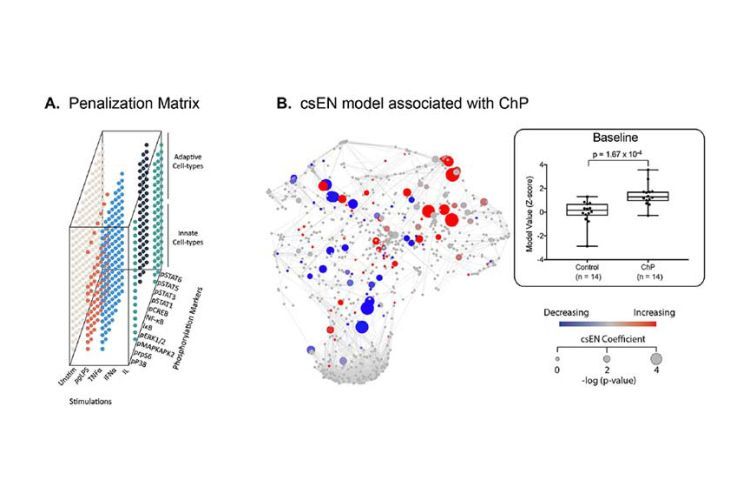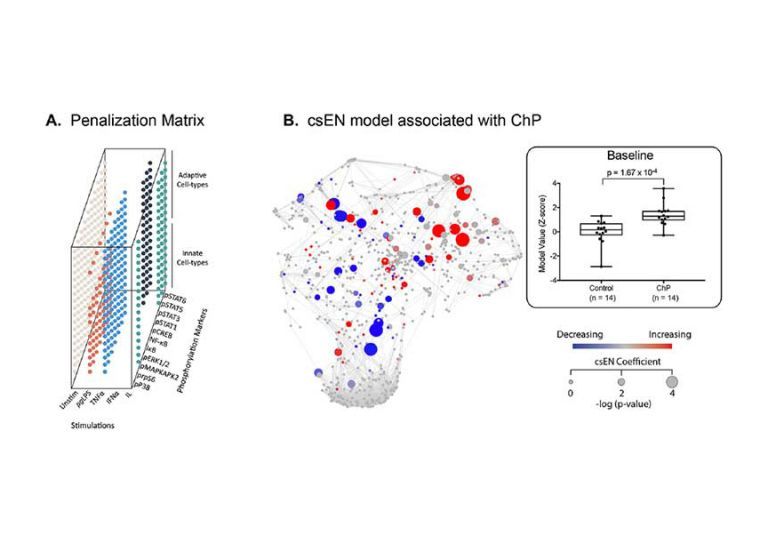Breadcrumb
Systemic Immunologic Consequences of Chronic Periodontitis
What is it?
Research into the effects of chronic gum disease on the entire body.
What problem does it aim to solve?
Nearly one in two American adults — 46% — have chronic gum disease. This is a problem for the health of the mouth, since periodontal problems can lead to tooth loss. But the negative effects aren’t confined. Evidence has accumulated that there is a link between periodontal conditions and cardiovascular disease, diabetes, dementia, cancer and miscarriages/premature labor.
How does it work?
This was a study that started with 30 participants, half of whom had chronic gum disease that was being treated, and half who were healthy control subjects. Follow-up study took place three weeks after scaling, root planing and/or prophylaxis, and at that time, only nine patients and seven controls were available. Tissue samples were taken both at the initial session and the follow-up and analyzed. The main finding: “the capacity of specific immune cell subsets to respond to an inflammatory challenge is altered in peripheral blood samples from patients with chronic periodontitis (ChP). The most prominent differences between the immune features … were observed in innate immune cells and included heightened TLR-2/4 responses to Porphyromonas gingivalis LPS and depressed signaling responses to TNFa, IFNa, and IL-2/4/6 and GM-CSF.”
What are the real-world implications?
“These results suggest that the systemic immune signature of ChP identified in this study is driven, at least in part, by local pathologic processes that are sensitive to disinfection of the oral cavity.” In short, chronic gum disease causes detectable changes to the immune system and its response, while treatment can reverse those changes.
What are the next steps?
Additional immunotherapy research and also studies on larger populations.

A cell signaling–based elastic net (csEN) analysis identifies systemic immune signaling features associated with chronic periodontitis (ChP). (A) We adapted a previously implemented cell signaling–based penalization matrix for the csEN analysis that accounted for whether a cell type– and receptor-specific signaling response to each stimulation condition is supported by prior knowledge of signal transduction pathways. (B) (Left panel) The csEN identified immune signaling features that differentiate samples from patients with ChP and those from controls at baseline. Each node is colored by model coefficient. Red and blue indicate features elevated and decreased in samples from patients at baseline, respectively. Node size is proportional to the P value of the difference between patient and control samples (Wilcoxon rank sum test). (Right panel) For each of the 28 patients, a unique model value from the csEN is represented as a z score in the box plot showing that the model significantly differentiates the patients with ChP (n = 14) from the controls (n = 14). Values are presented as median, interquartile range, and range.
Source
Systemic Immunologic Consequences of Chronic Periodontitis, Journal of Dental Research, Volume 98, Issue 9, 1 August 2019, Pages 985-993
Authors
D.K. Gaudilliere, Division of Plastic and Reconstructive Surgery, Department of Surgery, School of Medicine, Stanford University
A. Culos, Department of Anesthesiology, Perioperative and Pain Medicine, School of Medicine, Stanford University
K. Djebali, Department of Anesthesiology, Perioperative and Pain Medicine, School of Medicine, Stanford University
A.S. Tsai, Department of Anesthesiology, Perioperative and Pain Medicine, School of Medicine, Stanford University
E.A. Ganio, Department of Anesthesiology, Perioperative and Pain Medicine, School of Medicine, Stanford University
W.M. Choi, Division of Plastic and Reconstructive Surgery, Department of Surgery, School of Medicine, Stanford University
X. Han, Department of Biomedical Sciences, University of the Pacific, Arthur A. Dugoni School of Dentistry
A. Maghaireh, Division of Plastic and Reconstructive Surgery, Department of Surgery, School of Medicine, Stanford University
B. Choisy, Department of Anesthesiology, Perioperative and Pain Medicine, School of Medicine, Stanford University
Q. Baca, Department of Anesthesiology, Perioperative and Pain Medicine, School of Medicine, Stanford University
J.F. Einhaus, Department of Anesthesiology, Perioperative and Pain Medicine, School of Medicine, Stanford University
J.J. Hedou, Department of Anesthesiology, Perioperative and Pain Medicine, School of Medicine, Stanford University
B. Bertrand, Department of Anesthesiology, Perioperative and Pain Medicine, School of Medicine, Stanford University
K. Ando, Department of Anesthesiology, Perioperative and Pain Medicine, School of Medicine, Stanford University
R. Fallahzadeh, Department of Anesthesiology, Perioperative and Pain Medicine, School of Medicine, Stanford University
M.S. Ghaemi, Department of Anesthesiology, Perioperative and Pain Medicine, School of Medicine, Stanford University
R. Okada, Department of Anesthesiology, Perioperative and Pain Medicine, School of Medicine, Stanford University
N. Stanley, Department of Anesthesiology, Perioperative and Pain Medicine, School of Medicine, Stanford University
A. Tanada, Department of Anesthesiology, Perioperative and Pain Medicine, School of Medicine, Stanford University
M. Tingle, Department of Anesthesiology, Perioperative and Pain Medicine, School of Medicine, Stanford University
T. Alpagot, Department of Periodontics, University of the Pacific, Arthur A. Dugoni School of Dentistry
J.A. Helms, Division of Plastic and Reconstructive Surgery, Department of Surgery, School of Medicine, Stanford University; adjunct faculty in the Department of Biomedical Sciences, University of the Pacific, Arthur A. Dugoni School of Dentistry
M.S. Angst, Department of Anesthesiology, Perioperative and Pain Medicine, School of Medicine, Stanford University
N. Aghaeepour, Department of Anesthesiology, Perioperative and Pain Medicine, School of Medicine, Stanford University
B. Gaudilliere, Department of Anesthesiology, Perioperative and Pain Medicine, School of Medicine, Stanford University






